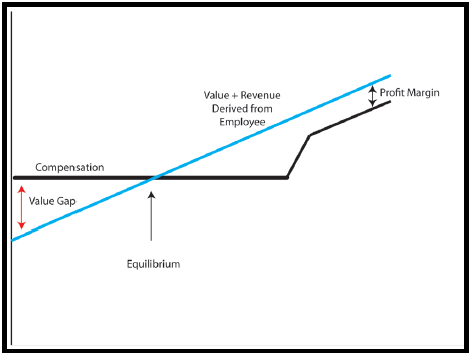When you do decide to bring on an employee, one thing is almost universally true: it will take a while for that employee to bring enough value and revenue to the business to offset the amount of money you’re paying them. There are really three phases of income for new employees, and understanding them can help you set clear timeframes and expectations during the hiring process and beyond.

1) The Value Gap – During this phase, the employee will be getting paid more than the sum of the value and revenue they are bringing to the business. It’s important to let them know that you understand that there is a learning curve, and that there is a gap between these two numbers. If they are not in a revenue-generating position, it’s important to attempt to quantify the value of their support role as it pertains to your quality of life and define expectations around what you hope to get out of the relationship (long weekends, shorter hours, vacation time, etc.) and how soon you would like to achieve that goal (6 to 18 months, usually).
2) The Point of Equilibrium – Obviously, this is a very subjective point, but think of equilibrium in terms of the balance between the value and revenue your employee brings to the business and amount of compensation they receive for the work. Hopefully at some point, your employee will be worth more money than they’re getting paid.
It’s important to acknowledge this achievement and continue discussions about the continued progress they need to make in order to further increase their compensation. In exchange for the risk of hiring, managing and training this employee, you should expect to earn some profit off their continued efforts, for a while!
3) The Profit Margin – Don’t get greedy! The margin of profit, or the difference between the value and revenue that the employee brings to the business and the amount that you pay them cannot get too large, or they’ll decide to become your competition. Once your employee has passed the point of equilibrium, it’s important to revisit their salary and commission arrangements at least twice annually to make sure you’re remaining competitive and continuing to profit from the relationship. On the revenue side, your accounting systems should be equipped to provide the data that you need. On the value side, you’ll have to weigh your quality of life gains from the relationship on your own terms.
If you understand and remain aware of these three phases in an employer – employee relationship, your chances of retaining a key employee will increase dramatically.